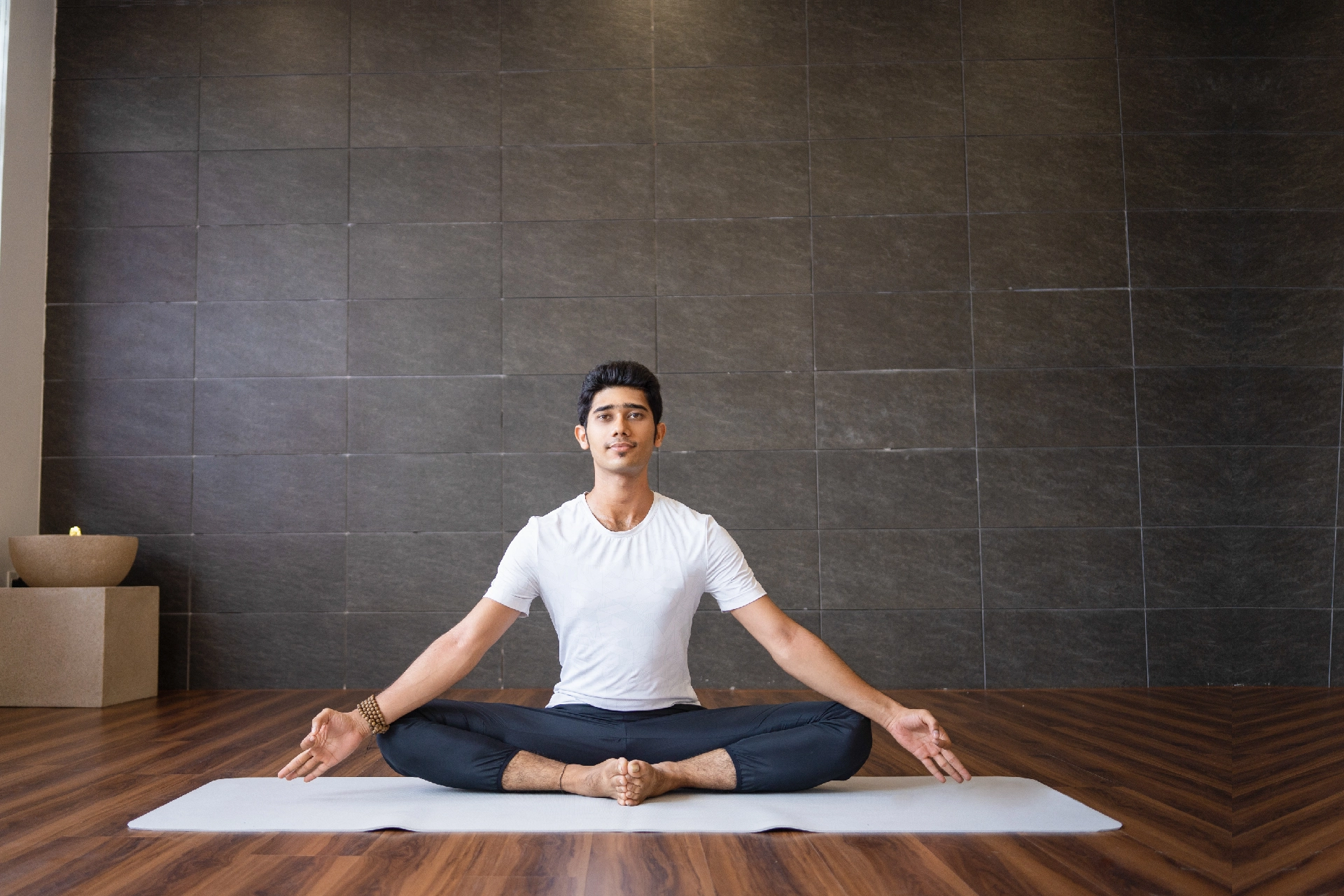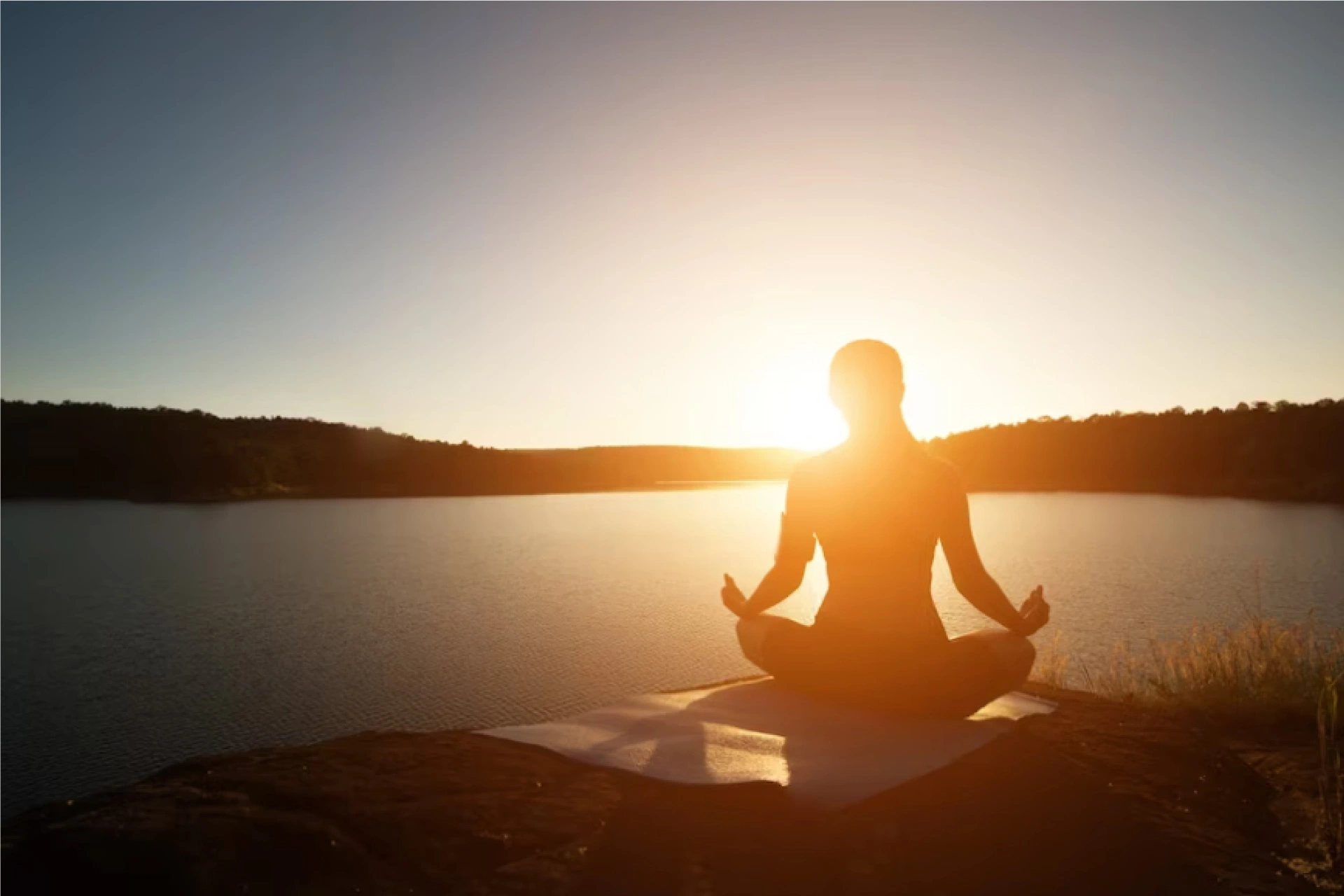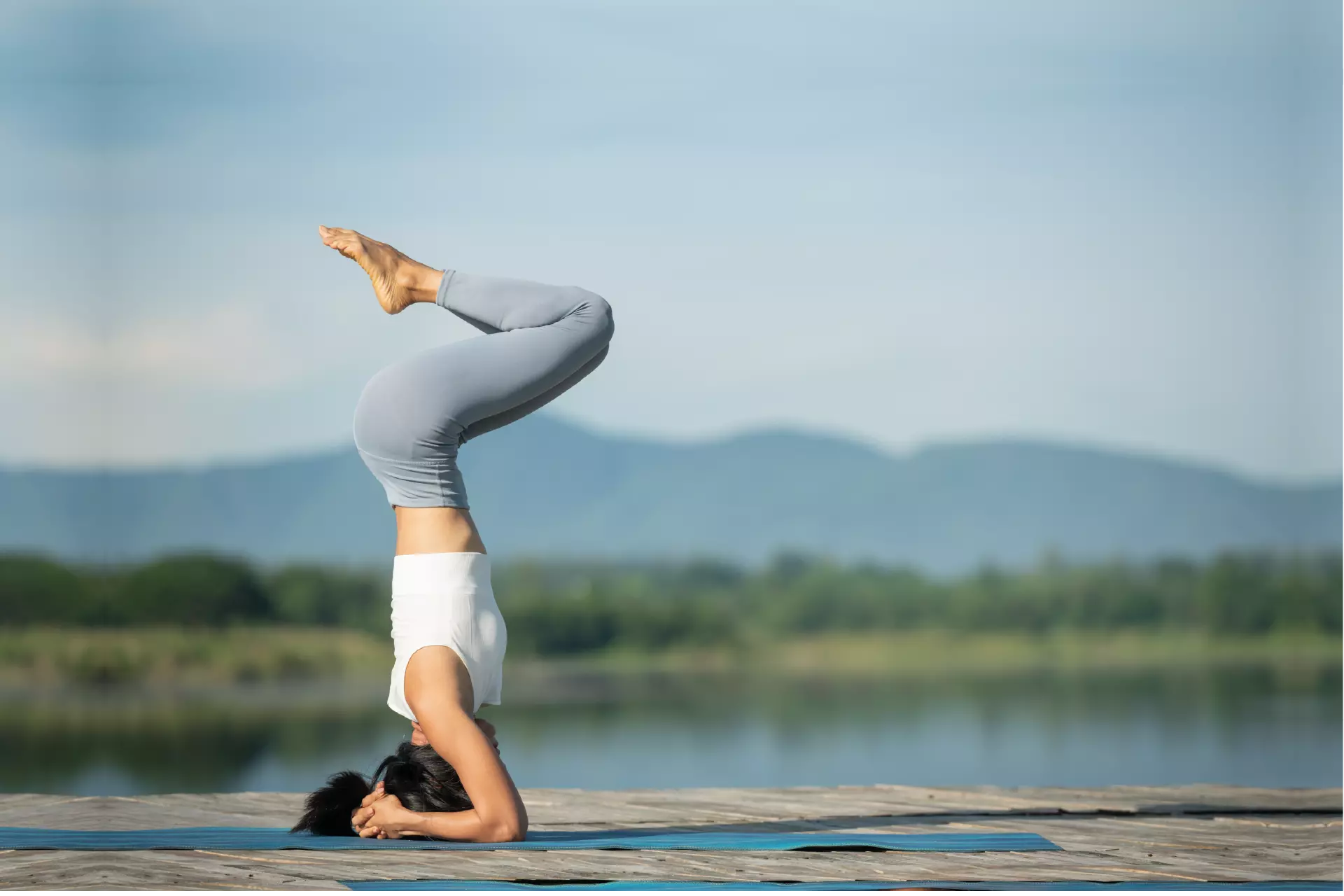Physiotherapist | 7 min read
Bhramari Pranayama (Bee Breath): Benefits, Steps, and More
Medically reviewed by
Table of Content
Synopsis
Bhramari pranayama is a yogic breathing technique involving inhaling deeply and exhaling while humming, similar to a buzzing bee. It is simple to perform and can be added to your yoga routine to reduce stress. Whether you're new to yoga or an experienced practitioner, Bhramari is a powerful tool for achieving inner calmness.
Key Takeaways
- Pranayama Bhramari is a sound-based breathing method
- Pranayama Bhramari calms the nerves and soothes them, especially around the brain and forehead
- People with respiratory conditions should consult a doctor before practicing pranayama Bhramari
Bhramari Pranayama gets its name from the Sanskrit language, with "pranayama" meaning "breathing expansion." This simple yet powerful breathing technique creates a strong connection between our consciousness and imagination. By practicing Bhramari Pranayama, we can experience a deep sense of calm and connect with our inner selves. This practice is beneficial for individuals dealing with anxiety or agitation, as it helps release unwanted feelings and replace them with enthusiasm and freshness.
In this article, we explore the many Bhramari benefits and give step-by-step instructions on how to practice it.
What is Bhramari Pranayama?
Bhramari pranayama, or bee breath, is a yoga breathing practice that helps people relieve tension and calm their minds. The term "Bhramari" is derived from the Sanskrit word "Bhramara," which means black bumblebee or carpenter bee found in the Indian subcontinent. This pranayama technique is named Bhramari because of the buzzing sound produced during exhalation, similar to the sound of a bee's humming.
At its core, pranayama Bhramari is a sound-based breathing method and a great exercise for the lungs. It resembles Pranava breathing, where you inhale fast and chant "AUM" as you exhale.
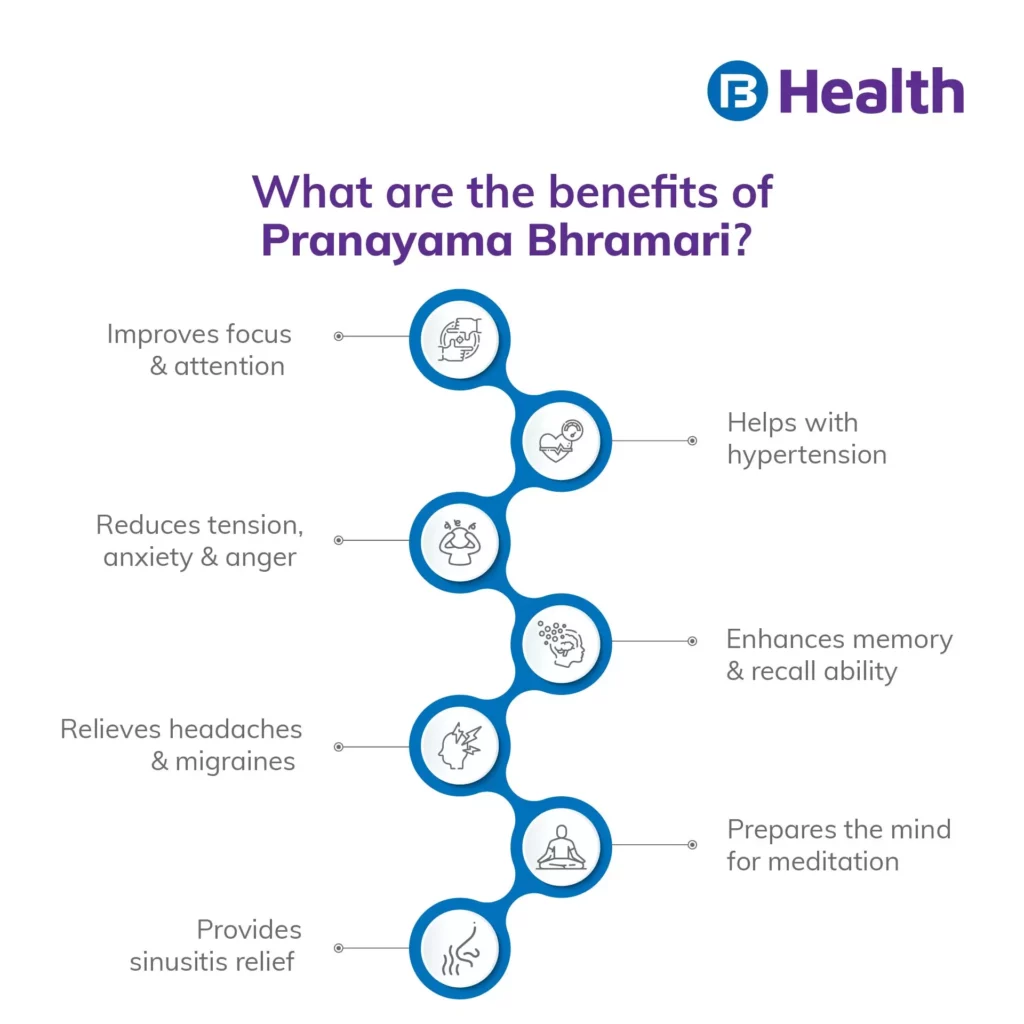
Bhramari Pranayama: Step-by-Step Process
- Lay out your yoga mat and assume a meditation pose. Ideally, it would be best if you sat in Siddhasana or Padmasana, but any cross-legged sitting position is suitable
- Close your eyes and insert your index or middle finger into your ears to block out exterior sounds. Draw your attention to the middle of your brows (Ajna Chakra)
- Make a very gentle murmuring or humming noise while taking a deep breath in and exhaling slowly and deliberately
- Produce a buzzing noise during the entire exhalation. The sound must be even and steady. You might not be able to do it at first, but with practice, it becomes easier
- Your jaw, especially the tongue, teeth, and nasal canals, should vibrate
- Attempt to picture the music stimulating and vibrating the area between your eyebrows (Ajna Chakra)
- When you first begin, you can perform six to ten rounds of pranayama Bhramari without stopping
- After you've finished, keep your eyes closed and breathe normally for a minute
After you have finished, it is the perfect time to practice mantra meditation or "AUM" chanting.
Benefits of Bhramari Pranayama
Pranayama Bhramari gives one a pleasant energy boost. There are many other Bhramari pranayama benefits if practised regularly, such as:
- Improves focus and attention
- Reduces tension, anxiety, and anger [1]
- Relieves headaches and migraines [2]
- Provides sinusitis relief [3]
- Helps with hypertension and heart-related conditions [4]
- Enhances memory and recall ability [5]
- Prepares the mind for meditation
- It clarifies the mind and soothes agitated feelings (Hatha Yoga)
- Helps to refocus on yourself by minimizing external stimuli and separating the thoughts (Pratyahara)
- It helps to connect the breath and the thoughts (Preparation for meditation)
- It brings about Kundalini Energy (Tantra Yoga)
- It helps to vanish into the sound that is "unstruck" (Nada Yoga)
Ways to Practise Bhramari
You can also perform Pranayama Bhramari while lying on your right or your back. Make a humming noise while performing the Pranayama on your back, and do not worry about maintaining your index finger in your ear. Pranayama Bhramari can be done three to four times each day.
It is typically performed using the pranayama sequence of Anulom Viloma, Bhastrika Pranayama, and Bhramari Pranayama, followed by meditation and recitation of the mantra "Aum."
Basic Bhramari
- Place your feet up and close your eyes. Take a few deep breaths to centre yourself and become aware of your mental condition
- When you're ready, inhale and make a low- to medium-pitched humming sound in your throat for the duration of your exhale
- Take note of how your sinuses, tongue, and teeth are all softly vibrated by the sound waves. In addition, think of your entire brain vibrating as the sound plays
- Keep your eyes closed as you perform this breathing exercise for six cycles before returning to your regular breathing
Silent Bhramari
- Once more, take a few deep breaths to settle in and become ready.
- Now perform six more basic Bhramari cycles
- After your sixth round, go to silent Bhramari, where you envision making the buzzing sound with each breath
- Do this six times and check whether you can feel vibrations in your sinuses and face
Bhramari with Shanmukhi Mudra
- Put both hands on your face with the thumbs on each tragus
- Then, gently touch the inner corners of your eyes with your middle and index fingers while placing your ring and little fingers above your lips
- Make sure you are sitting up straight. Lower your hands after six additional rounds of low- to medium-pitched Bhramari
- You should avoid the Shanmukhi Mudra if you have claustrophobia, anxiety, or depression
High Pitch Bhramari
- For this type of Pranayama Bhramari, close your eyes and take a few regular breaths after you've settled back into a comfortable sitting position
- Now, with or without the Shanmukhi mudra, perform six rounds of high-pitched Bhramari. The vibration will likely be felt higher in the head than with the lower-pitched sound, so pay attention to where you feel it. Compare the outcomes after experimenting with various volumes and tones to find what suits you
- According to the yoga tradition, well-selected sounds have potent and beneficial effects
- Bhramari's sound waves may not directly benefit the thyroid, but even if that is the case, Bhramari benefits include a better-balanced neurological system, a calmer mind, and increased awareness
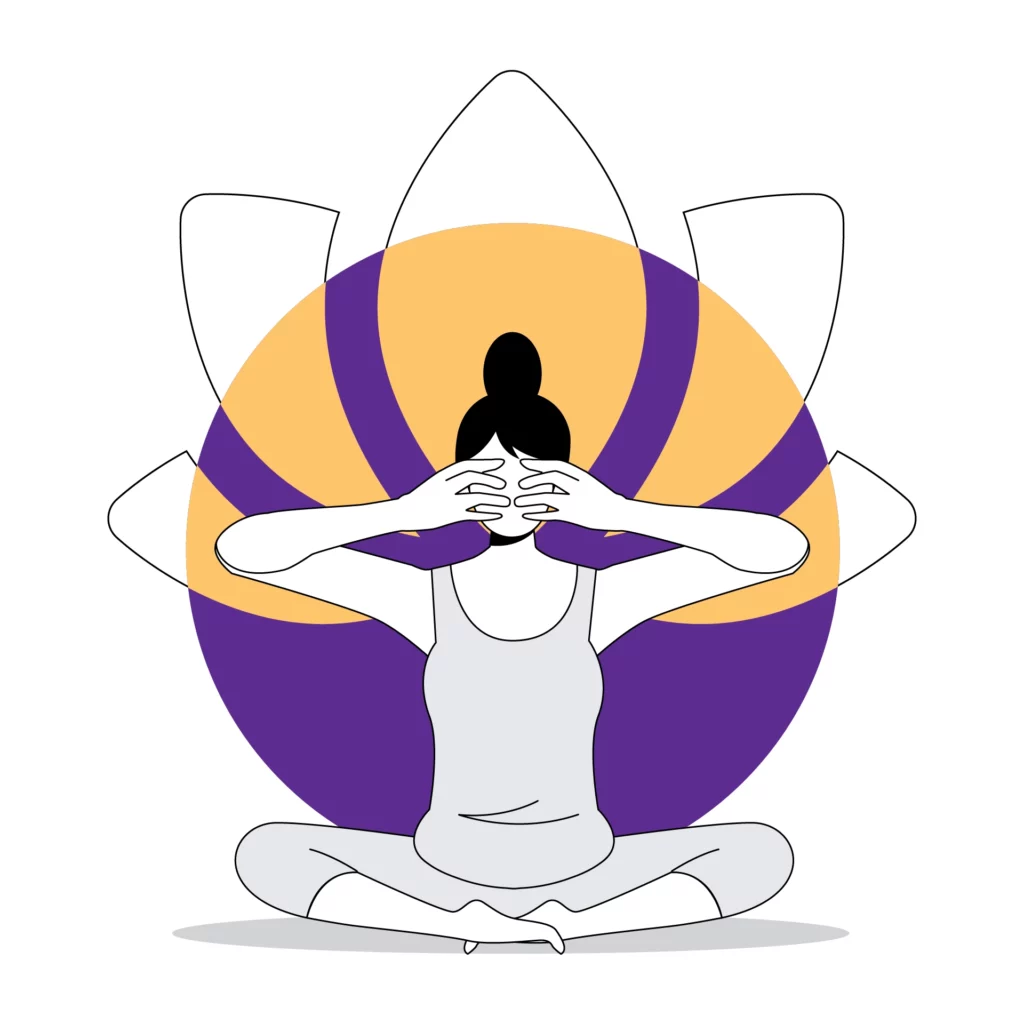
Precautions
The Pranayama Bhramari (bee breath) involves the same safety precautions as other physical activities. The following are some precautions of Bhramari Pranayama that must be followed when conducting the practice:
- Remember to complete Anulom Vilom Pranayama before beginning Bhramari Pranayama
- To achieve the best results, make sure your fingertips are on the cartilage and not within your ears while performing the Pranayama
- Be gentle with the cartilage. Both the person conducting the Pranayama and the Pranayama itself may suffer from overuse of the cartilage
- While performing Pranayama Bhramari, keep your lips closed. The humming must originate from within
- After you've finished the Pranayama, slowly open your eyes
- An empty stomach in the early morning is ideal for performing the Pranayama. There needs to be a gap between doing the Pranayama and eating if you're doing it in the evening or at any other time of the day
- When performing Pranayama Bhramari, your fingers must be in the Shanmukhi Mudra
- Attempt to practice all forms of Pranayama with a professional nearby
- If you feel uncomfortable, don't try to force yourself
- Avoid applying pressure on the face
- Don't do this more than five times
Women who are pregnant or menstruating shouldn't perform Pranayama Bhramari. Moreover, it should not be used by anyone with severe hypertension, epilepsy, chest pain, or an active ear infection.
Important Tips
Do’s
- If you are comfortable with the Pranayama, experiment with the volume and pitch of humming, including quiet humming. Take note of the effects of various intensities and how you feel
- Women who are pregnant should avoid this
- Perform Pranayama Bhramari with Shanmukhi mudra if you intend to do meditation afterwards. It promotes inward perception, Ajna stimulation, and consciousness. The perfect environment is also created for in-depth reflection (dhyana)
- Perform the Pranayama in a peaceful environment, ideally before morning. A quiet setting increases the Pranayama Bhramari's efficacy and enables you to perceive the vibrations at a subtler level
Don'ts
- At no time should you clench your teeth or tighten your jaw. During performing Pranayama Bhramari, the lips should constantly be in contact, and the teeth should be slightly spaced apart. This is necessary to feel and hear the vibrations more clearly
- Do not attempt Pranayama Bhramari when you are exhausted, such as immediately following a challenging postural yoga session. Permit your breathing to return to normal by waiting a few minutes.
- Also, unless it is to relieve sleeplessness, avoid doing it while lying down
To learn more about the benefits of Bhramari Pranayama and other health and wellness topics, visit the Bajaj Finserv Health website for many informative articles and resources.
References
- https://www.ncbi.nlm.nih.gov/pmc/articles/PMC6106724/
- https://www.ncbi.nlm.nih.gov/pmc/articles/PMC5755957/
- https://www.ncbi.nlm.nih.gov/pmc/articles/PMC6521749/
- https://www.ncbi.nlm.nih.gov/pmc/articles/PMC4948385/
- https://www.ncbi.nlm.nih.gov/pmc/articles/PMC7735501/
Disclaimer
Please note that this article is solely meant for informational purposes and Bajaj Finserv Health Limited (“BFHL”) does not shoulder any responsibility of the views/advice/information expressed/given by the writer/reviewer/originator. This article should not be considered as a substitute for any medical advice, diagnosis or treatment. Always consult with your trusted physician/qualified healthcare professional to evaluate your medical condition. The above article has been reviewed by a qualified doctor and BFHL is not responsible for any damages for any information or services provided by any third party.
